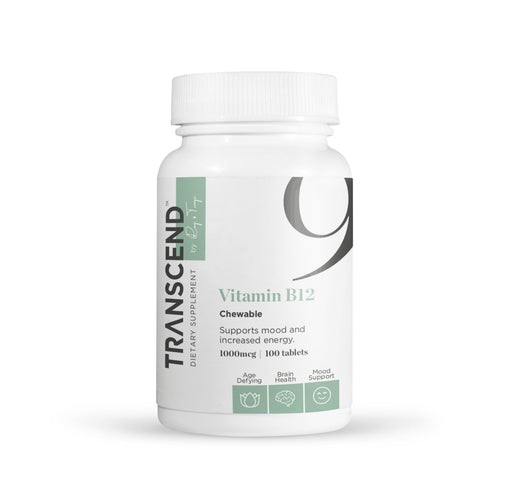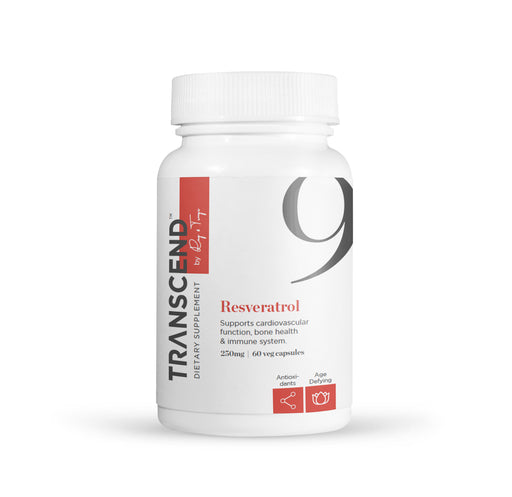
Vitamin B-12, Sublingual
Increased energy Improve mood Fight fatigue Common deficiency Better absorption Vitamin B12 (also called cobalamin) is one of eight water-solu...
View full details
Taking care of our skin is important, and not just from a beauty perspective. Our skin is not only our first-line defence against infection, it performs many other essential tasks that keep our bodies functioning optimally. The benefits of spending time basking in the sun’s rays are numerous from a synergistic standpoint of decreasing stress, healing skin conditions, and to boosting natural Vitamin D3 levels. That said, it’s fairly easy to damage our skin with frequent or prolonged exposure to the sun’s UV rays.
Most of us look dreamily toward spending time outside on hot sunny days – but it’s equally important that we spend that time responsibly to avoid getting more than we bargained for. While sunburns can be extremely painful and take a while to heal, they can cause far more serious damage to our skin on a cellular level.
Excessive sun exposure can cause Melanoma, a form of skin cancer where the pigment-producing cells –melanocytes– in our skin grow at an uncontrollable rate. In most cases, melanoma is highly detectable, preventable in many and treatable as well. There are several steps you can take throughout the year to keep your future years healthy and melanoma-free.
Being in-touch with your body is the keystone for early detection and the successful treatment of skin cancer. Self-examination on a monthly basis can be life-saving. Talk to your doctor about any concerns you have that stem from self-examination or to book a baseline exam. Be sure to come forward about any changes to moles/freckles/spots on the skin, especially if you are also noticing any itchiness, bleeding, or changes to their shape, size or color.
The Skin Cancer Foundation outlines the top things to keep in mind during your next self-examination, known as the ABCDE’s:
ASYMMETRY: If the mole is symmetrically round, it is most likely a benign ‘beauty mark’. If it starts to resemble an asymmetrical ink-splotch, it’s time to have your doctor check it out.
BORDER: The mole’s border should be uniform, smooth and even. An uneven or notched border may indicate a problematic mole.
COLOR: Single color moles are considered normal, but if you notice an uneven distribution of color (lighter in some spots) or multiple colors (blue, red, brown etc) on one mole, it could be a warning sign of melanoma.
DIAMETER: As a rule, a safe mole will be small – the size of a pencil erasure. Anything larger may indicate a growing melanoma.
EVOLVING: Generally, a mole should remain the same size, shape, color, etc. Changes indicate activity that may be cause for concern.
There are also melanomas with characteristics that do not fall under the ABCDEs. For example, some may have no color at all. These unpigmented sites can be colorless, clear, pinkish, or look more like a bruise or discoloration, than a particularly defined skin spot.
We can’t advocate enough the importance of maintaining proper Vitamin D levels in the body. To ensure proper levels and protect against deficiency, research indicates that we require: balanced sun exposure, self-awareness, a healthy diet and supplementation.
Vitamin D regulates over 1,000 different genes that control practically every function in the body - from immune function to vital nutrient metabolism.
Sunlight exposure is well-known as an effective way of boosting vital nutrient levels. But, there is the much debated question of “How much sun exposure is safe?” The answer to this lies primarily within individual factors such as: clothing amounts, sunscreen levels, body fat content, and natural melanin content in skin, etc.
There is a less scientific way to safely enjoy time outside on dreamy sunny days. In conjunction with self-examination and speaking with your doctor regarding any concerns you have, on an annual basis, you can raise the your skin’s defences against melanomas by doing the following:
Daily use of sunscreen with an SPF 15.
Avoid sitting in direct sunlight, tanning, and burning your skin
Seeking adequate shade during the day, as well as covering yourself with breathable clothing.
Be sure to increase the frequency of application and SPF numerical (go to a 30+) in your sunscreen when swimming or out of doors for longer periods of time, reapplying every 2 hours or post-swimming or excessive sweating.
Skin cancer is initially diagnosed during a visual examination by a dermatologist. The physician will then use a dermatoscope to examine the area more closely, and conduct a biopsy if it seems suspicious.
Amazingly, new technologies are using search algorithms and image databases to capture and identify possible melanomas simply by taking a picture of the mole. This deep convolutional neural network (CNN) classification technique has been developed by researchers at the Stanford AI Laboratory and Google Inception v3 CNN architecture.
The algorithm of this system is able to classify lesions accurately. This development in CNN will assist in the difficult task of differentiating between images and time elapses of the lesion. Diagnostic care is vital in regards to all diseases and in melanomas, the use of AI like this CNN on anyone’s Smartphone (where it is hoped to be available in coming years) will be highly assistive in prevention in coming years.

Increased energy Improve mood Fight fatigue Common deficiency Better absorption Vitamin B12 (also called cobalamin) is one of eight water-solu...
View full details
Combat internal aging Protect cells from radiation damage Increase antioxidant capacity Take with lecithin for better absorption Optimal dose for...
View full details
2022 update: Future batches of this product will use a Ubiquinol product that is a greenish capsule rather than a red softgel Bioavailable form o...
View full details
2022 update: to maintain the same dose of Phosphatidylcholine you are accustomed to, we are moving back to the 420mg in 2 softgels! 2022 update: ...
View full details
Leave a comment